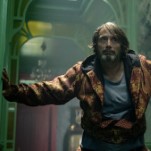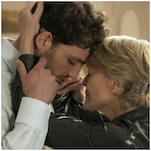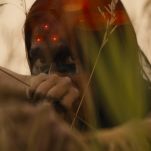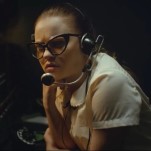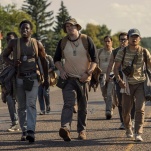If You Are Alive, You Need to See Blue Planet II
Photo: Paul Williams/BBC America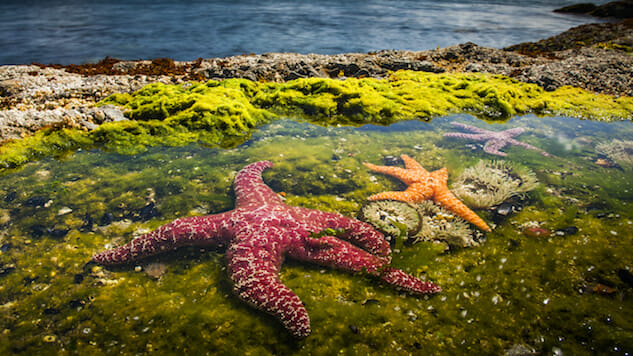
The original episodes of Blue Planet surprised me in how little time they spent on the “but…” factor of environmental degradation (even several years ago), but that was OK. I know and knew then that ocean ecosystems are compromised. It was rather a relief to watch something that was still focused on what did work. The original Blue Planet episodes were magnificent, some of the best natural history television ever made. The sequel is a more than worthy successor.
And if you were wondering if the “but…” was going to be addressed? Yeah. It is.
Still narrated by the irreplaceable Sir David Attenborough and still wall-to-wall mesmerizing, the seven episodes of Blue Planet II have stunning photography, enhanced by a lush score by Hans Zimmer and a beautiful, shimmering, crackling, scuttling, subtly ringing quality to the sound editing, so you really feel as though you’re in the water. You’ll see some images familiar to those who enjoyed the original series—the way a whale carcass on the ocean floor feeds an entire community of deep-sea dwellers for months or years; the relationship between turtles (and corals) and the moon. The sense of vastness and mystery and infinite diversity is still very much there and very much amazing.
Now, though, there is no question that the time for pure celebration of the interlocking diversity of sea life (which includes us) is over. It’s time, not to despair, but to act.
The oceans are dying, folks. And we’re directly causing it, and if we don’t put our backs into stopping it, we’re all toast. Attenborough at 91 is as calm, assured and staid as ever, but there is a plaintive note as he remarks, “There is cause for hope.” As in, “There is cause for hope if everyone changes their focus and their behavior right this second. Are you willing to save yourselves, folks?”
The episodes take advantage of every available advance in technology to capture events and sights and sounds it wasn’t possible to grab even ten years ago—we see the first deep submersible dive in the Antarctic; thanks to enhanced, ultra-quiet diving equipment, we’re able to watch tuskfish using rocks and corals to dash clamshells to pieces so they can get at the tasty innards (as it turns out, non-mammals can and do use tools). We see walruses and puffins and dolphins struggling to survive against increasingly tough odds; it’s seldom pointed out directly that Humans Have Done This, but it doesn’t have to be. We know. And the vignettes speak eloquently for themselves. There is no need for polemic.
There’s no point to trying to catalogue the range of creatures whose lives are touched on in the series, but it encompasses the weird and the familiar, the land creatures who depend on the sea and some sea creatures who are intimately tied to the land. Brilliant and hypnotic, unblinking but utterly non-histrionic, the show doesn’t anthropomorphize these animals—there’s no need for that. They have vivid, relatable lives of their own.
This series will appeal to your senses, your intellect, your emotions. It teaches without being alienating. It entreats without being overly plaintive. It is urgent without being preachy. And it is a straight-up technical masterpiece that, if it doesn’t thrill you speechless with its sheer beauty (and shake you up about the role plastic plays in your life), might be an indication that you want to see a neurologist.
Haunting. Thrilling. Terrifying. Humbling. And, holy shit, gorgeous. All I can say is thank you to the people who spent four years putting this together.
Well, that and please, do not miss this program. Whoever you are, if you are alive, you need to see it.
Planet Earth: Blue Planet II premieres Saturday, Jan. 20 at 9 p.m. on BBC America.
Amy Glynn is a poet, essayist and fiction writer who really likes that you can multi-task by reviewing television and glasses of Cabernet simultaneously. She lives in the San Francisco Bay Area.



















